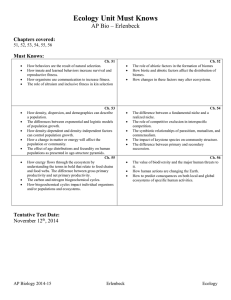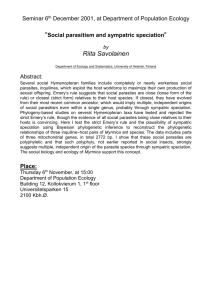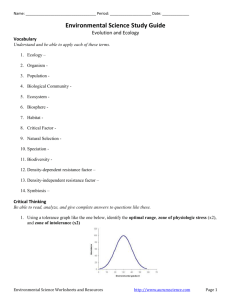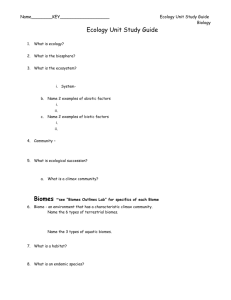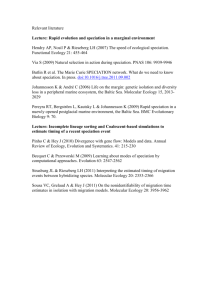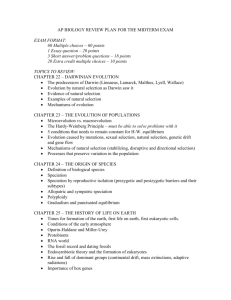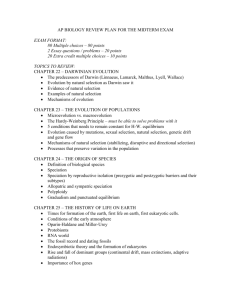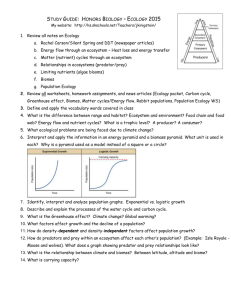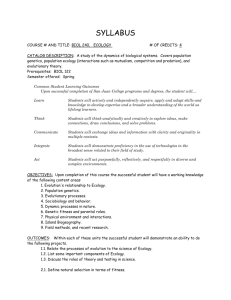Last SI session!
advertisement
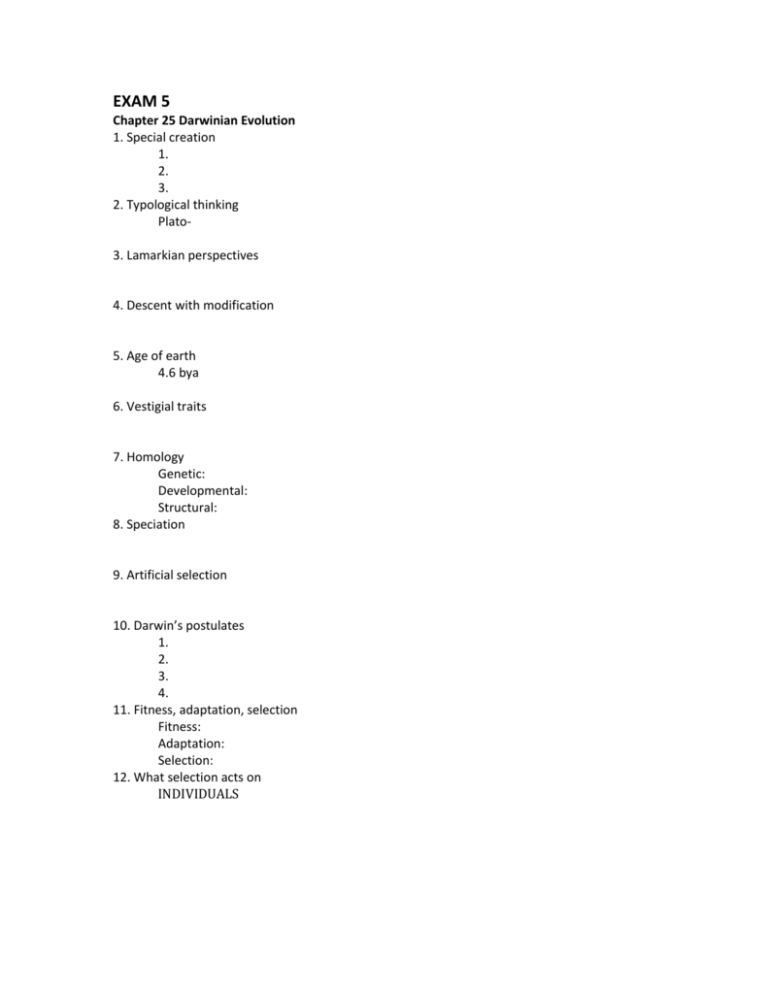
EXAM 5 Chapter 25 Darwinian Evolution 1. Special creation 1. 2. 3. 2. Typological thinking Plato3. Lamarkian perspectives 4. Descent with modification 5. Age of earth 4.6 bya 6. Vestigial traits 7. Homology Genetic: Developmental: Structural: 8. Speciation 9. Artificial selection 10. Darwin’s postulates 1. 2. 3. 4. 11. Fitness, adaptation, selection Fitness: Adaptation: Selection: 12. What selection acts on INDIVIDUALS Chapter 26 Evolutionary Processes 1. What is the Hardy-Weinberg Model and how is it used as a null model for evolution? Equation: Assumptions: 2. What is inbreeding depression, how is it an example of non-random mating, and does it result in evolution? Why or why not? 3. What are the agents of evolution? How do they cause evolution (i.e., a change in allele frequencies)? Natural selection: Genetic drift: Gene flow: Mutation: 4. What are the four modes of natural selection we discussed in class? Directional selection: Stabilizing selection: Disruptive selection: Balancing selection: 5. Inter- vs. Intrasexual selection InterIntraChapter 27 Speciation 1. The three primary species concepts (biological, morphospecies, phylogenetic) and how they are distinguished BiologicalMorphospeciesPhylogenetic2. Allopatric vs. Sympatric speciation AllopatricSympatric3. How are hawthorn and apple flies an example of sympatric speciation? 4. Vicariance 5. Pre- vs. Postzygotic mechanisms of isolation PrePost6. Hyrid Zones 7. Reinforcment Exam 6 Chapter 52 Introduction to Ecology 1. The hierarchical levels of ecology 2. What are the primary factors that determine the range and abundance of species? 3. What is a Hadley Cell? 4. What is a Rain Shadow? 5. Precipitation and Temperature patterns in the terrestrial biomes 6. The broad distribution of the various terrestrial biomes across the planet 7. What determines the distribution and abundance of species in aquatic biomes? 8. Lake turnover Chapter 53 Behavioral Ecology 1. Proximate vs. Ultimate causation 2. Innate vs. Learned behavior 3. Cost-benefit analysis in learned behavior 4. Optimal Foraging 5. How do animals make cost-benefit mating decisions in a way that maximizes their fitness? 6. Think about mate choice, parental investment in progeny, deceit. 7. Hamilton’s Rule and when altruism makes sense Chapter 54 Population Ecology 1. What is a population? 2. What is a life table and what does it summarize? 3. What types of species have Type I, II, and III survivorship curves? 4. What is the difference between exponential and logistic growth? Which is density dependent and which is density independent? 5. What is carrying capacity and how is it incorporated into the logistic growth equation? 6. Be able to describe population dynamics in metapopulations and in the cycling hare and lynx example. Chapter 55 Community Ecology 1. Communities – what are they and what characteristics are needed to understand their structure? 2. Fitness 3. Commensalism , Competition, Consumption , Mutualism and symbolic representations 4. Intra vs interspecific Competition 5. competitive exclusion principle and expected outcomes 6. Asymmetric competition vs symmetric competition 7. fundamental niche vs realized niche 8. niche differentiation, resource partitioning, character displacement 9. Constitutive or standing defenses, inducible defenses Constitutive/Standing: Inducible: 10. Müllerian vs Batesian mimicry MüllerianBatesian11. Keystone species 12. Clements and Gleason – predictability of ecological communities ClementsGleasonConclusions13. MacArthur & Wilson island biogeography predictions 1. 2. 14. Intermediate disturbance hypothesis
